#Kentrosaurus
Text
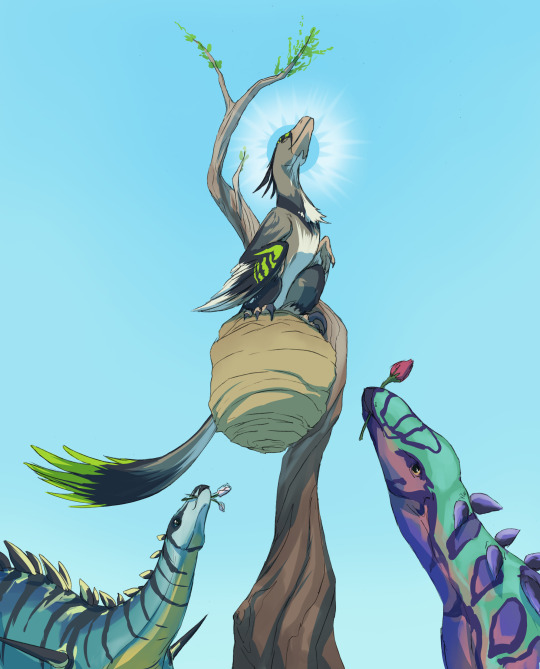


Been playing a lot of Path of Titans lately
#Path of Titans#PathofTitans#PoT#Dinosaurs#Deinonychus#Pycnonemosaurus#Allosaurus#Kentrosaurus#Struthiomimus#Camptosaurus#Oh the moments of joy and frustration this game has brought me#Being a baby is scary but sometimes you are surprised by super nice people#As Kentros my sister and I encountered the Chicken King of the Hive#Struthi and Campto are our go-tos for running around and having a good time
297 notes
·
View notes
Text
A concept:

275 notes
·
View notes
Text
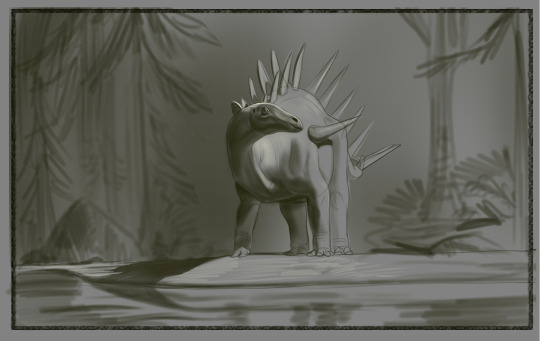
An old sketch of a kentrosaurus I found while organizing some files.
#my art#illustration#dinosaur#paleontology#paleoart#paleoillustration#prehistoric#sketch#kentrosaurus
285 notes
·
View notes
Text
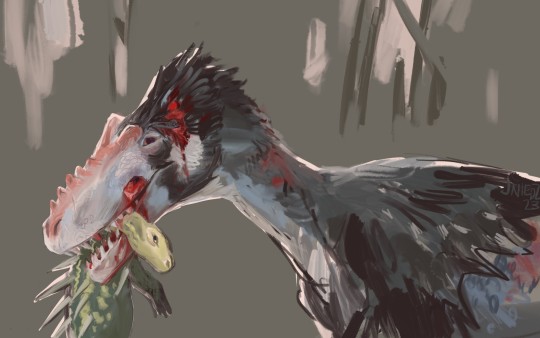
Injoory screenshot practice
(Perun been naughty and got a kentrosaurus in the face)
180 notes
·
View notes
Text

He’s just Ken-trosaurus
Inspired by @paleopinesofficial
#cartoon#dinosaurs#barbie#barbie movie#i’m just ken#he’s just ken#i’m kenough#kentrosaurus#art meme#my art#digital art#illustration#illustrator#digital illustration
203 notes
·
View notes
Text

dinovember day 15: kentrosaurus 🍞
#dinosaur#prehistoric#paleontology#dinovember2023#kentrosaurus#stegosaurids are so cube#they make for a good loaf
134 notes
·
View notes
Text
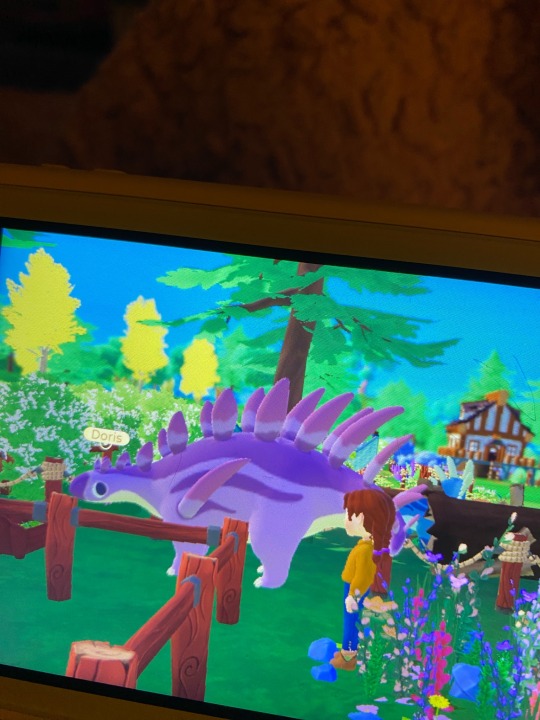
everyone meet Doris, she is very large and very purple
33 notes
·
View notes
Text
Now that’s just bad luck…
#she was so close to reaching sub adult too rip#video#not transformers#path of titans#kentrosaurus#citipati
25 notes
·
View notes
Text

kentro's bonding experience grow stronger everytime they whale eye things together
23 notes
·
View notes
Text
SISTER FORMATIONS: MORRISON, LOURINHA AND TENDAGURU
Back in the Late Jurassic Period, North America, Europe and Africa were next door neighbors.

This is reflected in the similarity of the lithology, and fauna of the rocks. In North America, we have the Morrison Formation, in Europe we have the Lourinha Formation, and in Africa we have the Tendaguru Formation. All of these are contemporaneous or sister formations.
Stratigraphy
The Tendaguru Formation is approximately 177 m thick and broken up into five members: Lower Dinosaur Member (cross-bedded, fine-grained sand and siltstone w/interbedded clay), Nerinella Member (trough cross-bedded and massive sandstone indicating a tidal channels, sandbars and beaches),

Middle Dinosaur Member ( ripple, cross-bedded, fine-grained calcareous sandstone and siltstone and massive to crudely bedded siltstone and claystone indicating tidal flats and lagoons),
Indotrigonia Africana Member (calcite cemented sandstone, conglomerate, thin claystone, and siltstone with sandy limestone indicating tidal and deltaic channels),
and the Upper Dinosaur Member (ripple, cross-bedded, fine-grained sandstone and siltstone with interbedded claystone and micriitic carbonates indicating tidal flats).
The Lourinha Formation is about 200 to 1000 meters thick and is broken into about 5 members: Praia da Amoreira Member (massive mudstone with meter thick sandstone lenses and calcrete layers indicating a meandering river system),
the Porto Novo Member (cross-bedded sandstone indicating a deltaic system), the Praia Azul Member (marl and mudstone indicating brief marine transgression),
and the Santa Rita and Assenta Members (mudstone, caliche, shelly carbonates near the top indicating a landward side of a deltaic system) which are equivalent members from different basins.

The Morrison, as stated previously, is about 200 m thick and consists of 11 different members. I will not go into detail about them again but it should be noted that the formations are approximately the same thickness and made of primarily sand, silt and mudstone.
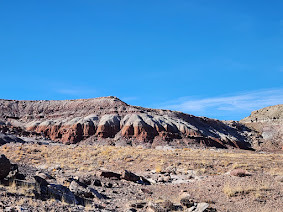
DINOSAURS
Now for the other fun part: the dinosaur fauna. There are some dinosaurs that are shared between two or all of the formations. These include Ceratosaurus nasicornis in the Morrison and a possible Ceratosaurus in the Tendaguru
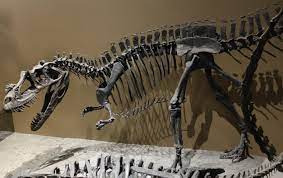
and in the Lourinha, Torvosaurus tanneri in the Morrison, Torvosaurus gurneyi in the Lourinha, and a possible Torvosaurus species in the Tendaguru,
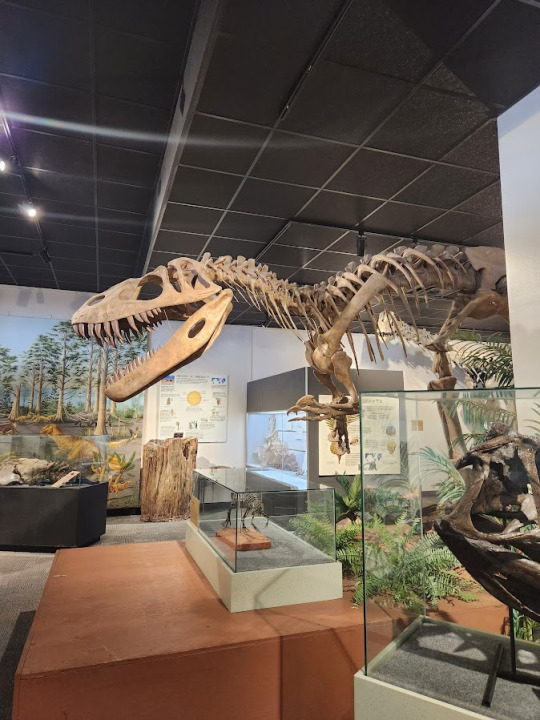
Allosaurus fragilis in the Morrison and Allosaurus europaeus in the Lourinha,

Dryosaurus altus in the Morrison and a possible Dryosaurus species in the Lourinha,

Miragaia longicollum in the Lourinha and possibly Miragaia longispinus in the Morrison. Though if that's true, the genus would be Alcovosaurus because that was named first.

And then there are the dinosaurs that were similar to each other in each formation. Filling in the niche or living alongside Dryosaurus was Dystalotosaurus of the Tendaguru,
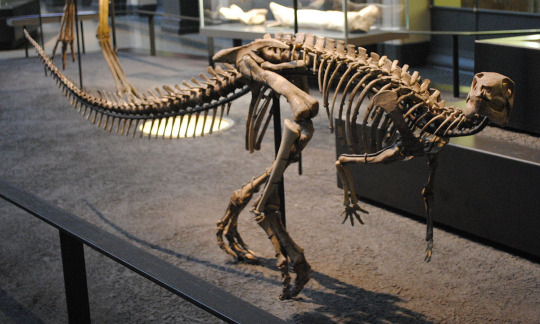
Eudryosaurus in the Lourinha, and Nanosaurus in the Morrison.
There's Draconyx in the Lourinha and Camptosaurus in the Morrison as early iguanodonts.

Kentrosaurus in the Tendaguru, Dacentrurus in the Lourinha and Stegosaurus and Hesperosaurus in the Morrison are the main stegosaurs.
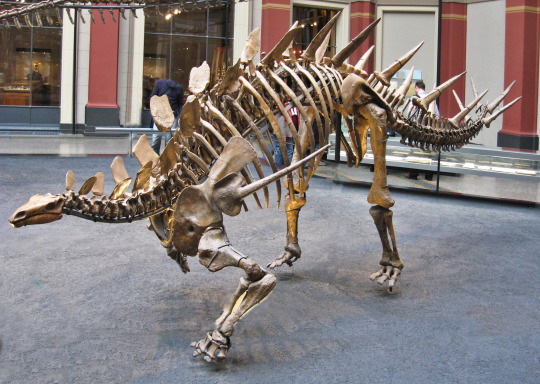
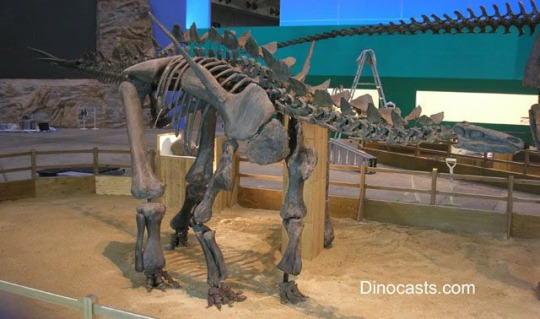


For ankylosaurs, there is Dracopelta in the Lourinha and Mymooropelta and Gargoyleosaurus in the Morrison.


Then there's Dicraeosaurus of the Tendaguru and Suuwassea of the Morrison.

Giraffatitan of the Tendaguru, Lusotitan of the Lourinha and Brachiosaurus of the Morrison all represent brachiosaurs.
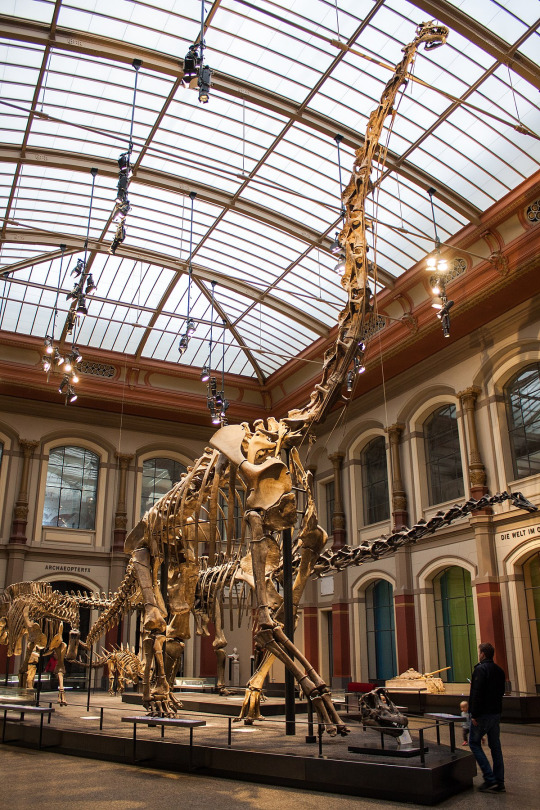
Janenschia of the Tendaguru and Haplocanthosaurus of the Morrison represent early sauropods.

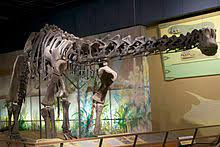
Tendaguria of the Tendaguru and Zby of the Lourinha are even earlier sauropods.

Torneiria of the Tendaguru and Deinheirosaurus of the Lourinha are the diplodocids that match up with the bagillion in the Morrison.
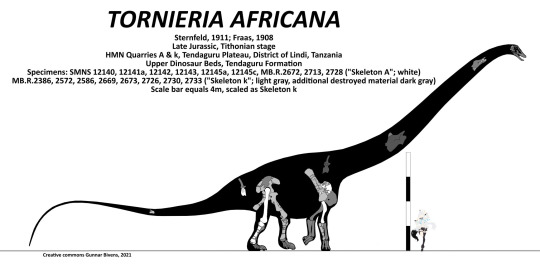
Lourinhasaurus is the camarasaurid representative of the Lourinha.
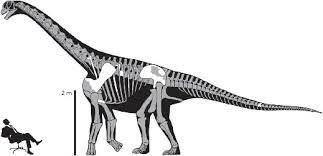
The Tendaguru and the Lourinha have early carcharadontosaurs in the forms of Veteruristisaurus and Lusovenator.
Lourinanosaurus is the European equivalent of Marshosaurus in the U.S.

And Elaphrosaurus of the Tendaguru is the small to medium-sized equivalent of Tanycoalgreus in the Morrison.
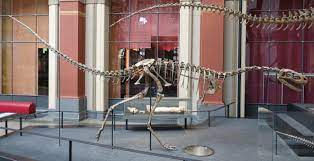

This was a ton of info so if you want it more broken down, message me! I am happy to walk you through it all! Enjoy your weekend!
#paleontology#dinosaur#fossils#geology#lithology#north america#europe#africa#morrison formation#lourinha formation#tendaguru formation#science#allosaurus#torvosaurus#ceratosaurus#stegosaurus#brachiosaurus#giraffatitan#miragaia#kentrosaurus#dacentrurus#mymooropelta#dracopelta#gargoyleosaurus#dryosaurus#sandstone#mudstone#limestone#siltstone#stratigraphy
22 notes
·
View notes
Text
Kentrosaurus

Kentrosaurus is a genus of stegosaurid dinosaur from the Late Jurassic of Tanzania. Small for a stegosaur, adults measured around 4 m in length and weighed 700–1,600 kg. It had a small, elongated head with a beak used to bite off plant material that would be digested in a large gut. Kentrosaurus had a double row of small plates running down its neck and back, which merged into spikes on the hip and tail. The longest spikes were on the tail end and were used to actively defend the animal. There was also a long spike on each shoulder. The thigh bones come in two different types, suggesting that one sex was larger and more stout than the other.
78 notes
·
View notes
Photo
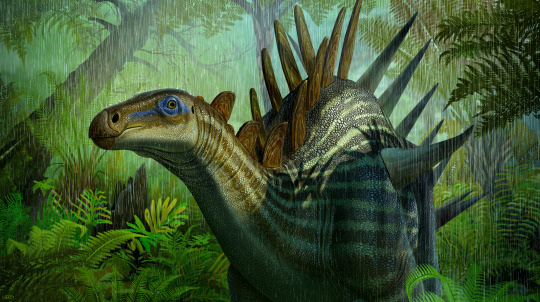
A male kentrosaurus caught in the middle of a sun shower.
#my art#dinosaur#kentrosaurus#stegasaur#prehistoric#jurassic#paleontology#paleoart#paleoillustration#Illustration#scales#ferns#rain#wildlife#dinosaur art#Africa
900 notes
·
View notes
Text

November's dino is the Kentrosaurus.
The kentrosaurus is another friend from the Late Jurrasic era! His name translates to 'pickle lizard' which I personally find far funnier than I'm sure it's meant to.
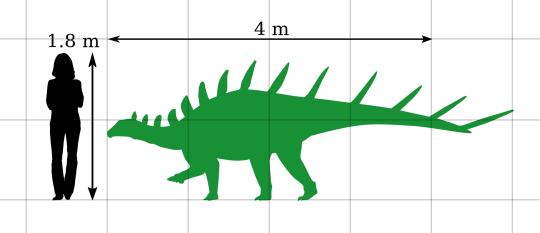
#my content#dinosaur#craftblr#crafter#crafting#queer crafts#trans crafter#crafts#cross stitch#needlework#dino#project || dinos#Kentrosaurus#late jurassic#late jurassic era
36 notes
·
View notes
Text

Herbivorous Dinosaurs are No Peaceful Pacifists
(i want the hammond collection jp3 ankylosaurus but never found them in any stores)

#jurassic park#dinosaurs#dinosaur toys#jurassic world mattel#jurassic world#stegosaurs#palaeontology#jurassic world fallen kingdom#jurassic world dominion#ankylosauria#kentrosaurus#camp cretaceous#herbivore#ankylosaurus#jurassic park mattel#dino escape#fallen kingdom#paleontology#hammond collection#dominion#jurassic world iii#jp3
25 notes
·
View notes
Text


#Archovember Day 22 - Kentrosaurus aethiopicus
Much smaller than its cousin Stegosaurus, Kentrosaurus aethiopicus was still a very unique stegosaur. From the Late Jurassic of Tanzania, Kentrosaurus had multiple means of defense: from a row of plates down its back that gradually merged into spikes, to longer spikes on the end of the tail, and even spikes on each shoulder! Well… probably. These two unique, broad-based spikes were not found attached to the animal. Classically, they were placed on the hips. However, the more recent discoveries of Gigantspinosaurus and Huayangosaurus had shoulder spines, so it is now typically placed on the shoulders.
Kentrosaurus was a herbivore and did not seem to do much chewing, instead swallowing its food in large chunks, probably also swallowing stones to help grind its food. It would have eaten low-growing food and fruit, though it may have also been able to rear up on its hind legs to reach higher vegetation.
There seem to have been two seperate morphologies of Kentrosaurus: one robust and one gracile. It is suggested that these represent sexual dimorphism, with the more common robust form being females and the less common gracile form being males. However, the ratio of common/uncommon may be skewed by the robust form being more easily fossilized.
Kentrosaurus aethiopicus lived alongside the small iguanodontian Dysalotosaurus, sauropods like Giraffatitan and Dicraeosaurus, theropods like Elaphrosaurus and Veterupristisaurus, and small mammals like Brancatherulum.
163 notes
·
View notes
Text
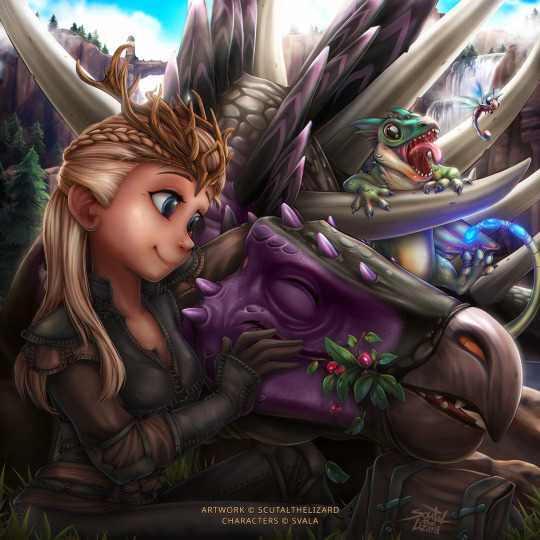
Comm for Svala. Time to relax.
Why not relax on the grass, eating delicious berries under the warm spring sun with your pets, admiring the views of rivers full of life and the cliffs of a huge canyon towering above them, where you can feel a pleasant cool and fresh wind? 😴☀️🍓🍃⛰️
14 notes
·
View notes